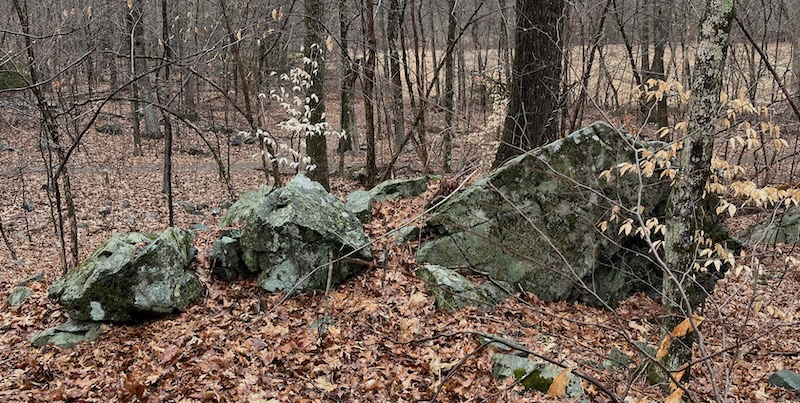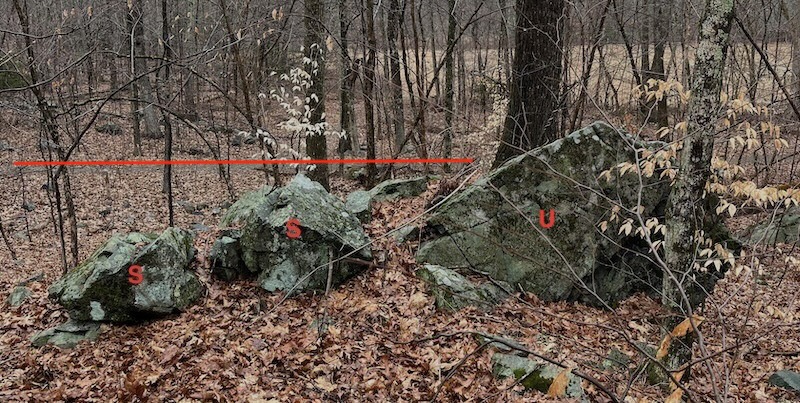Below is a 2-mile route at a former monastery in Cumberland RI.
Official map here.
There was a Trappist monastery here from 1902 to 1950. The monks quarried stone for crosses, etc. I placed a green pin on their quarry. In 1950, the monastery was damaged by fire, and the monks moved to Spencer MA, leaving behind blocks of stone (picture below), and some quarrying tools. (More info about monastery here.)

Just past this spot, at the top of a small rise, you can see large chisels still embedded in rock.
Quarrying often creates ponds; quarrying by the monks created the pond below.

If you look closely at the above picture, you can see how the quarrying left walls of stone, sharp edges where blocks were removed.
I put a black pin on what is probably a standing stone; it seems to have been propped, rather than embedded in the ground (see picture below).

The standing stone is both tall and fat. Notice its manitou shape, and notice how the rock in front echoes this manitou shape (picture below).

Native Americans were fond of echoes, visual rhymes, parallel arrangements. Such parallelism seems to be a basic trait of art, in all times and places. Below is a “visual rhyme” from York Maine (photo by Robert Sirois).

I put a blue pin on what may be a hunting blind (picture below); it’s on a slight hill, and it consists largely of a natural, unmodified boulder, with two smaller stones placed alongside, perhaps to extend the blind. The large boulder on the right (i.e., the natural, unmodified boulder) would almost conceal a person who was standing up.

In the picture below, I marked the two smaller stones S, I marked the unmodified stone U, and I put a red line on the trail.

The blind has a somewhat ragged look, especially from below. This ragged look seems to be characteristic of NativeAmerican hunting blinds; they were utilitarian, not artistic.
The smaller stones have both been propped. If the blind consisted of just the unmodified stone, should we still call it a hunting blind? Or should we reserve the term “hunting blind” for man-made structures? If a standing stone is made by nature, should we call it a standing stone? Or should we reserve the term “standing stone” for man-made stones?
Doubtless the first hunting blind was made by nature; nature “invented” the hunting blind, and man borrowed the idea from nature. Likewise, the first standing stone was probably made by nature, and man borrowed the idea from nature. Art starts from nature, art selects from nature. Nature was the first artist, and inspired later artists.